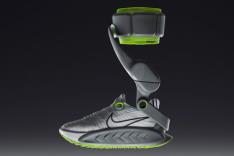Most runners don't like the thought of completing fewer workouts that play to their strengths during the beginning and middle of their training cycles. "They may like it intellectually, but they don't like to actually do it because they want to do the stuff that makes them feel fit immediately," McMillan says. "They want to feel good in their workouts all the time. But, sometimes you have to design your training plan to delay your fitness being built."
More: Run Your Best Race: The Art of Peaking
Tips for Implementing This Strategy
If you're a beginner, you need some time to experiment to figure out how you adapt to training. The best thing to do is follow a training plan or—better yet—get a coach to help guide you. Keep a training journal that details everything you did during training (workouts, cross-training, strength training, stretching, icing, recovery, sleep, etc.) what you ate and drank and when and, most importantly, how you felt before, during and after (even days after) your runs.
More: Why Beginners Should Use Training Logs
Bottom line: This approach isn't ideal for beginners, as you don't yet have enough experience with running workouts in the four training zones, and you don't know how your body will respond to different training stimuli. Once you've completed a few training cycles and run a few races, you can revisit the principles in this article to create a more individualized training program.
More: Is Your Running Plan Appropriate for You?
If you've gone through a few training plans/cycles and you're developing a sense of how you respond to different types of workouts and distances, start your new training cycle by assessing your current level of fitness. McMillan has the runners he coaches complete a detailed self-assessment of their strengths and weaknesses as a runner, what types of runs they do and don't enjoy, as well as previous PRs and reactions to training cycles. As previously mentioned, look back at your training log to help complete your own self-assessment, which will give you specific ideas of how to customize your training plan.
The goal of your self-made customized training plan should be to arrive at your peak level of fitness for the goal distance you plan to race at the time of your event. Of course, this will be a trial-and-error process, but if you listen and respond to the signals your body gives, you should become adept at learning what works best for you.
Part two of this article will provide advice for a few common issues you could encounter while training.
More: Jay Johnson Solves 17 of the Most Common Running Problems
 Sign up for your next race.
Sign up for your next race.- 3
- of
- 3
About the Author

Get ACTIVE on the Go


Couch to 5K®
The best way to get new runners off the couch and across the finish line of their first 5K.
Available for iOS | Android







Discuss This Article